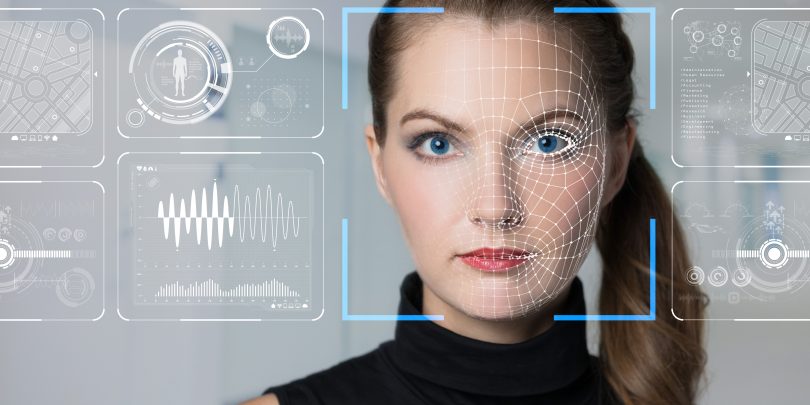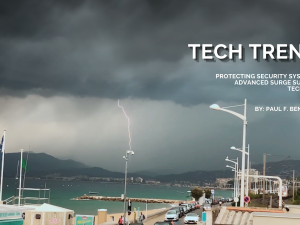In recent years, the rapid advancement of facial recognition technologies has sparked a heated debate about their use in security and law enforcement.
These technologies, which enable the identification of individuals based on their facial features, have been heralded as a breakthrough in enhancing security and streamlining law enforcement operations; however, they have also raised profound concerns about privacy, civil liberties, and potential abuses. As a response to these concerns, numerous cities and countries have started banning or heavily regulating the use of facial recognition technologies in these domains.
This has a big impact on the security industry as we prepare to understand, market, and deploy these technologies. Your customers will have questions, and their integrator should be able to provide some answers. Thus, it is essential to explore the arguments for and against the banning of facial recognition technologies in security and law enforcement to deliver the most informed recommendation to an end-user.
While the proponents of facial recognition technologies emphasize their utility, opponents argue that the risks and drawbacks far outweigh the benefits, leading to a growing movement to ban or heavily regulate their use in security and law enforcement.
The Rise of Facial Recognition Technologies
Facial recognition technologies have evolved at an astonishing pace. These systems utilize computer algorithms and databases of facial images to identify and verify individuals by analyzing distinct facial features. The technology has numerous applications, ranging from unlocking smartphones to enhancing security measures in public spaces and assisting law enforcement agencies.
Advocates of facial recognition technologies argue that they significantly contribute to national security and public safety. They cite instances where these systems have successfully identified and apprehended criminals, located missing persons, and thwarted potential terrorist threats. The potential applications are immense, including the rapid identification of suspects, enhancing border security, and improving the speed and accuracy of validating a person that may have been placed on a watch list.
The Case for Banning Facial Recognition Technologies
While the proponents of facial recognition technologies emphasize their utility, opponents argue that the risks and drawbacks far outweigh the benefits, leading to a growing movement to ban or heavily regulate their use in security and law enforcement.
Privacy concerns: The primary argument against facial recognition technologies is the grave invasion of personal privacy. The constant surveillance and monitoring of individuals in public spaces, without their consent or knowledge, raises serious ethical and legal concerns. The widespread use of these technologies could turn public areas into surveillance states, infringing on citizens’ rights to privacy and anonymity.
Inaccuracy and bias: Opponents have said these systems have been shown to exhibit a significant degree of inaccuracy, particularly when it comes to recognizing individuals from diverse racial and ethnic backgrounds. This inherent bias can lead to wrongful arrests and misidentifications, disproportionately impacting marginalized communities.
The potential for racial profiling and discrimination is a valid concern; however, tests of different facial recognition technologies have been conducted within the industry by IPVM.com that shows these systems can be successfully deployed but vary in their success by manufacturer.
Surveillance state: The deployment of facial recognition technologies has the potential to create a surveillance state, where individuals’ every move is tracked and recorded. This dystopian vision raises concerns about the erosion of personal freedoms and the establishment of a society where people are constantly watched and restricted in their actions.
Lack of accountability: In many cases, the use of facial recognition technologies lacks transparency and accountability. Law enforcement agencies and security firms may use these technologies without adequate oversight or regulations in place. This absence of checks and balances can lead to abuses of power and violations of civil liberties.
Security vulnerabilities: Facial recognition systems are not immune to security vulnerabilities. Hackers and cybercriminals could exploit these technologies to access sensitive information or manipulate data for malicious purposes. These vulnerabilities pose a significant risk to national security and individual privacy.
Bans and Regulations
In response to these concerns, several countries and cities have taken measures to regulate or prohibit the use of facial recognition technologies in various capacities. The website www.banfacialrecognition.com has a comprehensive list of U.S. locations where this technology is in use, under regulations, or banned.
European Union: The European Union has taken a proactive stance on protecting citizens’ privacy by implementing the General Data Protection Regulation (GDPR). GDPR places stringent regulations on the use of biometric data, including facial recognition technology. It requires explicit consent for data collection and mandates clear rules for its use.
San Francisco, California: In 2019, San Francisco became the first major city in the United States to ban the use of facial recognition technology by government agencies. The ban is aimed at preventing government surveillance and protecting civil liberties.
Massachusetts: Massachusetts followed suit with regulations aimed at protecting the privacy of its citizens. The state enacted a law that prohibits facial recognition technology for law enforcement purposes, except for cases involving serious criminal offenses.
Portland, Oregon: Portland passed a ban on the use of facial recognition technology by both public and private entities in 2020. The city cited concerns about civil rights and civil liberties as the driving force behind the ban.
The banning of facial recognition technologies in security and law enforcement is a complex issue that revolves around striking a balance between security and privacy. While these technologies hold significant promise in enhancing safety and aiding law enforcement, their potential for misuse, bias, and invasion of personal privacy has sparked a growing movement to restrict or prohibit their use. The global trend of implementing regulations and bans on facial recognition technology reflects the need to safeguard individual freedoms and civil liberties in an increasingly connected and surveilled world.
As you specify and endorse these systems for customers, I recommend consulting the Security Industry Association’s advocacy page on facial recognition technology.
What to Tell Your Customers
The future of facial recognition technology in security and law enforcement will likely involve continued debate and evolving regulations as governments and communities grapple with the challenge of preserving public safety while respecting fundamental rights. As technology advances and the societal landscape changes, finding a middle ground that respects both security concerns and individual privacy rights will remain a pressing issue for lawmakers, civil rights activists, and the general public.
As an industry we should note that the successful deployment and accuracy of these systems largely comes down to understanding the correct use-case, and designing the system to support the intended need. Too often, we rush to implement without considering proof of concept, not by the manufacturer, but within the context of the customers environment and application.
As you specify and endorse these systems for customers, I recommend consulting the Security Industry Association’s advocacy page on facial recognition technology (www.securityindustry.org/advocacy/policy-priorities/facial-recognition). The site includes research statistics that show positive support of facial recognition for public safety, air travel, workplace and other application areas. It also includes a full shareable document and a fact sheet exploring the values and the benefits of facial recognition that outlines each of SIA’s core principles regarding the responsible and effective use of facial recognition technology and makes recommendations for public- and private-sector applications of the technology, including by law enforcement. There are also success stories that integrators can use to validate the effectiveness of the technology.
This article originally appeared in the November 2023 issue of Security Business magazine. Paul F Benne is the President of Sentinel Consulting and has over 35 years in the protective service industry.







